Magnesium sulfate, commonly known as Epsom salt, provides an essential nutrient that can greatly enhance the well-being and productivity of tomato plants. In this regard, it is aimed at giving a comprehensive authoritative overview of the advantages that are associated with the use of Epsom salt and how to apply it precisely. Knowing when Epsom salt is most effective and how much to use gardeners can get bigger, healthier crops of tomatoes. This article will explain why Epsom salts work, signs in tomatoes that they are short of magnesium, and detailed guidelines on the appropriate times for using them when planting crops as well as during their growing period. This guide has been designed specifically to allow both beginners and veteran farmers to do tomato farming through a transparent and systematic approach effectively.
Understanding Epsom Salt and Its Benefits
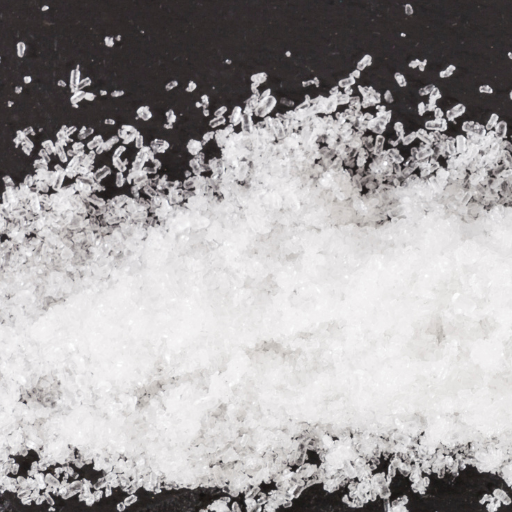
Two important nutrients in tomatoes are magnesium and sulfur, both of which are present in Epsom salt. Magnesium is important for photosynthesis as it is the key element involved in chlorophyll production. Tomato plants suffering from magnesium deficiency might show symptoms like yellowing leaves, stunted growth and reduced fruit size. Also, sulphur helps to form important amino acids and proteins within the plant. In order to have strong root systems, lush foliage and a high yield of tomato plants, Epsom salt provides these nutrients. Correct application leads to more absorption of nutrients, increased levels of chlorophyll resulting into healthy and active vegetation.
Chemical Composition of Epsom Salt
Moreover, chemically known as magnesium sulfate heptahydrate (MgSO₄·7H₂O), this compound consists of magnesium (Mg), sulfur (S) and oxygen (O). The substance exists in a hydrated form with seven molecules of water thereby called hydrated form specifically called magnesium sulfate heptahydrate. This makes its use viable in horticulture:
- Magnesium (Mg): On average, Epsom salt contains about 9.8% magnesium by weight. This mineral aids in chlorophyll production, which enhances efficient photosynthesis and directly affects plant growth and development.
- Sulfur (S): It has approximately 13% sulfur content by weight, which assists in the amino acid synthesis and protein formation required for vital plant cellular activities such as growth.
- Solubility: Epsom salt dissolves readily in water forming up to 710 grams per litre at 20 degree Celsius making it absorbed quickly through root system when dissolved.
- pH Neutral: This means that it does not change soil pH significantly, making it a good choice for different soil types without creating any imbalance.
Importance of Magnesium and Sulfur for Tomatoes
The role played by magnesium (Mg) in tomato farming has been understated. Chlorophyll, which is responsible for photosynthesis, requires this element to form. With enough magnesium, tomatoes would be able to convert sunlight into energy more efficiently resulting in better growth as well as fruit formation. Inadequate levels of magnesium lead to interveinal chlorosis wherein the leaves turn yellow but the veins remain green affecting the plants’ ability to perform photosynthesis effectively.
Conversely, sulphur is involved in synthesizing important amino acids and proteins that form plant cell building blocks. The strength and healthiness of tomato plants greatly depends on how sulfur contributes towards developing plant protein structures. Additionally, sulfur helps in generating some vitamins and enzymes that contribute to overall soundness of a plant as well.
Preparation of Epsom Salt Solutions
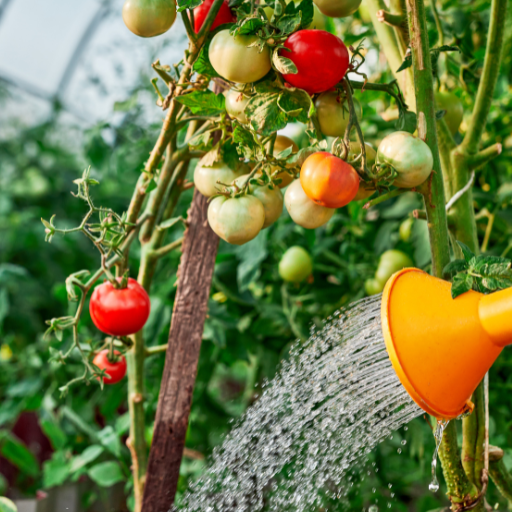
To prepare a solution of Epsom salt for tomato plants, start by dissolving one tablespoon (about 15 grams) of the Epsom salts in one gallon of water. This concentration ensures that nutrients are delivered effectively without being oversaturated. For foliar applications, spray it on the leaves once every two weeks to facilitate the absorption of nutrients through them. Alternatively, you can use this mixture to soak soil by pouring it at its base and ensuring even distribution around its root zone. To minimize losses and enhance uptake application should be done very early in the morning or late in the evening. Consistent use throughout each growth cycle helps keep magnesium and sulfur levels high enough to ensure better yields.
Measuring Epsom Salt Properly
For correct dose rates of Epsom salt for tomatoes, following recommended guidelines and considering specific plant needs is important. General recommendations suggest using 1 tablespoon (about 15 grams) of Epsom salt per gallon (3.78 liters) of water for both foliar sprays or soil applications.For adequate supply of sulphur and magnesium without overloading plants with excessive amounts which lead to nutrient imbalances.
- Dosage Ratio: The preferred dosage is 1 tablespoon/gallon of water. This ratio is supported by horticultural experts and extension services including; University Of Vermont, National Gardening Association etc.
- Application Frequency: Apply for best results from the Epsom salt solution used herein every two weeks. This regimen provides consistently available magnesium and sulfur – essential for continuing plant health and productivity.
- Application Method:
- Foliar Spray: Mist leaves with this remedy because they absorb nutrients faster especially when there are initial signs of magnesium deficiency like interveinal chlorosis.
- Soil Drench: Pour this blend into the ground near its stem ensuring good spread around the area within roots for long term nutrition uptake
Organic Tomato Growing Tips
Minimize evaporation loss and increase absorption efficiency by spraying in the morning or evening. By following these steps, your tomato plants will be healthier and you will have a better yield.To dissolve Epsom salt in water, start by measuring the recommended quantity of this product which is 1 tablespoon per gallon of water. Dissolution is made easier when one uses warm water.For complete solution, mix the salt crystals completely with a lot of water. Use a fine mist spray bottle for foliar sprays while watering can with narrow neck is good for soil applications. Proper dissolution ensures uniform nutrient distribution, Whether applied to foliage or soil.
Creating Foliar Spray Solutions
- Basic Magnesium-Boost Spray:
- Ingredients: 1 tablespoon of Epsom salt, 1 gallon of water
- Procedure: Stir in Epsom salts until dissolved in all the water. Pour the mixture into a fine mist spray bottle.
- Application Data: Apply every other week to supply magnesium continuously as foliar spray
- Spray the comprehensive nutrient:
- Components: a tablespoonful of Epsom salt, liquid kelp a teaspoon, water one gallon
- Procedure: First dissolve the Epsom salt in the water and then add the liquid kelp. Stir well to make sure that all parts are mixed thoroughly. Use a fine mist spray bottle for this.
- Application Data: Feed plants once in 2-3 weeks with both magnesium and micro nutrients from the kelp.
- Pests Resistant Spray
- Ingredients: 1 tablespoonful of Epsom salts; four or five drops of dish soap; one gallon of water
- Method: First, dissolve the Epsom salts in water. Then, add some drops of dishwashing soap and gently stir it. Pour this solution into a fine-mist spray bottle.
- Application Data: Use once per month. The dish soap’s natural surfactant properties keep bugs away while also ensuring efficient nutrient distribution through misting, as explained above.
Epsom salt Application Methods
One can mix Epsom salt straight into the ground while planting for soil incorporation. It is usually enough to place about one or two tablespoons either in each of the holes formed for planting or uniformly distributed over a larger area before being incorporated with the soil through tillage. Dissolve one to two tablespoons of Epsom salt in a gallon of water and apply it at the base of plants as a drench until thoroughly soaked. In this way, root absorption occurs thereby facilitating nutrient uptake.
That is why, when spraying leaves, use fine mist spray bottles to ensure even coverage. The plant’s leaves could be sprayed bi-weekly using an elementary solution whose composition involves mixing 1 tablespoon of Epsom salts with each gallon of water so that magnesium and sulfur are quickly absorbed by direct foliage application within minutes.
Foliar Spraying Techniques
However, foliar spraying techniques must be carefully employed to ensure efficacy without wastages. First, make sure the sprayer is set up correctly to emit uniform mist that would lead to equal distribution among plant leaves. Spraying should be done at cooler times such as early morning or late afternoon to avoid quick evaporation and possible leaf scorching. This period also coincides with maximum plant stomatal activity, leading to more nutrient uptake.
Technical parameters such as droplet size and nozzle type are important considerations when selecting a spray equipment; where droplet size varies from about 200-400 microns for perfect foliar applications through use of fine mist nozzles. Application pressures often range from 20-40 psi to maintain optimum droplet dispersion. Additionally, they may include non-ionic surfactants (%0.1-%0.2) added into solution which increases adhesion and minimizes run–off ensuring nutrients remain on leaf surfaces longer.
The solubility and pH levels during preparation determine how efficient the foliar solution will be. Epsom salts need to be dissolved at the rate of one tablespoon per gallon of water as recommended mixed well until completely dissolves so that the sprayer is not clogged. The solution pH should be maintained between 5.5 and 6.5 for maximum plant nutrient absorption. The spraying equipment needs regular cleaning and maintenance to avoid residue build-up and maintain consistent performance.
Soil Drenching Methods
Soil drenching involves applying water-soluble nutrients, pesticides, or fungicides directly to the soil around the base of plants. The active ingredients are absorbed by the root system through this method, thereby promoting systemic distribution throughout the plant.
Technical parameters to consider for soil drenching include dilution rate (DR), volume of solution applied (VSA) and soil moisture status during application process. Depending on a specific product being used, a dilution may range from 0.1% to 1% for nutrient solutions while up to 10% for some pesticide formulations. The solution volume should be enough to saturate the root zone but with no more runoff than possible in most instances a litre or two per plant is sufficient for medium sized plants only.
For better absorption and minimal chances of causing chemical damage to roots; always apply your solution on moist soils hence pre-watering before it is done is advisable if not recommended at all times. In order to ensure effectiveness as well as minimal environmental effects, intervals between reapplication need to be monitored when using pesticides together with resistance management strategies.
Raising the soil pH to between 6.0 and 7.0 will increase the availability and uptake of nutrients by plants. Additionally, soil fertility status may be adjusted based on periodic soil testing for proper nutrient program management. It is important to calibrate drenching equipment on a regular basis for accurate dosing and even application.
Root Zone Application
Soil Drenching as Root-zone Application Technique involves merging various technical parameters in order to optimize plant health and care well. The first step is determining the correct water dilution rate based on product label recommendations. Nutrient solutions may require between 0.1%-1% concentration, while pesticide solutions may require higher concentrations such as 5-10% depending on the targeted pest. Measurements tools like graduated cylinders and balance scales help achieve these rates accurately.
Another significant parameter is the amount of solution applied.. Normally it’s necessary to apply one or two liters of solution per medium sized plant so that the root zone gets saturated without runoff happening.. This can change with size of plant and type of soil hence it should be adjusted accordingly.
The significance of moisture content in soils cannot be overemphasized.. Putting this solution into a pre-moistened soil helps in absorbency reducing chances for root burnings.. Prior to doing a soil drench, you have to ensure that enough water goes into the soil so that active ingredients are properly distributed in it.
Furthermore, good soil conditions as well as optimum pH range from 6.0 to 7 promote nutrient availability and absorption by plants Regularly carrying out tests on soils enables us come up with specifics about maintaining our farms
Timing and Frequency of Application
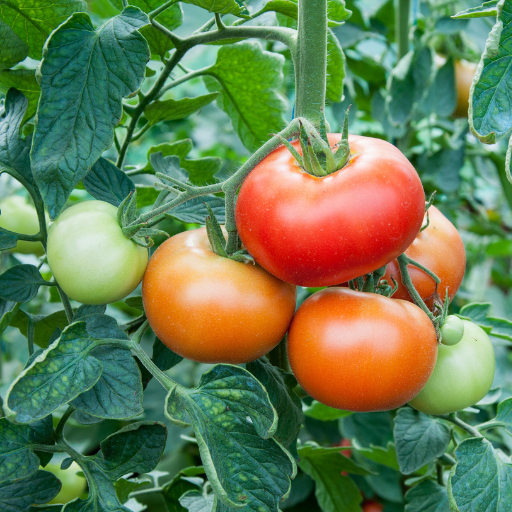
The timings and recurrence of soil drenching will depend on various factors such as the nature of pest, species of plant and environmental conditions. A first treatment should be followed by others which are done within a period not exceeding 14 days in order to manage pests in most cases. Soil drenching for nutrient application can be timed with the growing stages of the plant which include planting, during periods or active growth and just prior to flowering or fruiting. The correct timing for subsequent applications to prevent over-saturation and nutrient leaching can be determined by monitoring plant health and soil moisture levels.
Best Times to Use Epsom Salt
When used at the right times, epsom salt is one of the elements that can make soil drenching effective. For gardening purposes, epsom salts should be applied when plants are at their most active growth stage so that magnesium and sulphur nutrients are obtained in greater quantities.
- At Planting: including Epsom salt during seeding may encourage robust root development of seedlings; thus for this purpose mix 1 tablespoon of Epsom salt per hole or dissolve same amount into one gallon before watering new plants.
- During Active Growth: chlorophyll production is enhanced thus supporting overall plant health if Epsom salts are applied during this period. In general, you would dissolve 1 tablespoonful into a gallon and apply it to the soil every two weeks or use it as a foliar spray.
- Prior to Flowering/Fruiting: Immediately before flowering or fruiting commences, an Epsom salt soak promotes blossoms, thus increasing fruit set. Here again, use a similar concentration as in the active growth stage—1 tbsp/gallon—and put around the base where flowers begin.
Frequency for Optimal Results
Epson salt application frequency required for optimal results must consider specific plant needs with precision. To ensure continuous supply without causing nutrient imbalances use bi-weekly application schedule and each time mix 1 tablespoon of Epsom salt per gallon of water, which is slowly absorbed through soil.
For example, bi-weekly applications favoring leafy vegetables and herbs result in lush foliage and robust growth. However, it is important to occasionally test the levels of magnesium in soil, particularly when grown in magnesium-deficient soils, to prevent an overdose. Switching to weekly doses during the pre-flowering or fruiting stages for flowers and fruiting vegetables can enhance bloom density and increase fruit set without interfering with other nutrient inputs that would lead to nutrient competition or excesses.
Besides, this suffices as a monthly application during the active growing season for perennial plants & shrubs thus preventing their accumulation along with potential toxicity. These intervals are also suggested by reputable horticultural sources asserting proper nutrient uptake balance and avoiding over-saturation. This will help fine tune the timing frequency of applying nutrients in relation to plant development phases through regular soil analysis and observations on plant appearance.
Seasonal Factors
During the different growing seasons, plants actually require different nutritional needs and these differences need to be considered when applying Epsom salt in order to optimize growth and productivity. During spring, when plants are beginning an active growing season, a regimen of bi-weekly application of Epsom salt would be appropriate for leafy vegetables, herbs, and flowering plants. During this period it is important to ensure that enough magnesium and sulfur are available so as to enable for vigorous development of new leaves and shoots.
Because summer has high temperatures and longer days, increasing metabolic activities, applications are made more frequently. A shift towards weekly application after they start blooming or fruit setting stages can offer great benefits for flowering plants and fruiting vegetables. This rate of application remains constant at 1 tablespoon per gallon of water, ensuring uptake aligns with increased demand for magnesium during these crucial phases.
As autumn approaches, attention should be paid to maintaining plant health while reducing the frequency of Epsom salt applications to once every month for most perennial species as well as shrubs. This will adjust accordingly with the slowdown in growth rates, preparing them (plants) for winter, which they spend in a dormant state. In winter almost no nutrient is required hence total cessation from use of Epsom salts unless deficiencies have been identified through soil analysis is recommended..
Monitoring and Adjusting Epsom Salt Usage
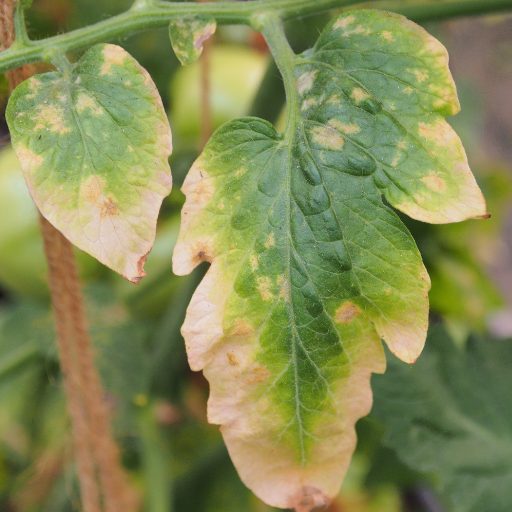
To effectively supervise and regulate the application of Epsom salts in gardening, one should first conduct a soil test to establish the initial levels of magnesium and sulfur in it. This is because overdoing it can cause an imbalance in nutrient status and thus compromise plant health thus precision use. By simply observing its growth rate as well as leaves’ appearance; one can easily tell if the plant is taking up nutrients from the soil properly or not. The absence of chlorophyll that manifests itself as yellow leaves and tissues will generally indicate lack of proper nutrition while lustrous green color may be interpreted as adequate supply.
Routine soil tests carried out every year or two can help fine-tune the amounts and timing of Epsom salt application. The rates have to be adjusted depending on crop requirements and prevailing soil conditions. Application must always be within recommended limits to avoid excessive usage, which exacerbates salinity buildup in soils with time. It will be easier to adjust fertilizer applications if there are records about soil results, how plants responded, and when Epsom salts were applied.
Signs that Indicate Magnesium Deficiency in Tomatoes
Magnesium deficiency has several distinct symptoms such as those see on tomatoes. One common sign is interveinal chlorosis where parts between veins become yellow but veins stay green. The uppermost ones become pale at their top most part before eventually turning yellowish this takes place just after lower older foliage again with some more spreading upwards showing worsening deficiencies possibly accompanied by curling upward or becoming crispy together with some necrosis at leaf margin during other severe incidences.Magnesium deficit normally results into dwarfed plants with poorly developed fruit set leading to reduced yield quality. Research shows that acceptable levels of magnesium in the soil range between 2-5% total exchangeable bases (TEB). Regular soil tests are therefore required to check these conditions so that deficiencies do not take place hence maintain optimum health state of plants.
Plant Observations
Certain key factors should be observed during magnesium supplementation to determine its effectiveness and check for possible negative effects. First of all, what is important is a change in the leaf pigmentation; it should turn a darker shade of green from yellow, specifically in between the veins. This is because there has been a reversal of interveinal chlorosis. Besides that, one can look at vigor and strength of growth. Leaves should not be curled or brittle if enough magnesium nutrients have been delivered to them, just like other robustly growing tomatoes.
Soil salinity also needs to be checked. If Epsom salt applications are too frequent, they may increase soil salinity, which eventually causes osmotic stress on plants, hindering water uptake and leading to wilting and scorching of leaves. Electrical conductivity (EC) measurements are recommended for regular monitoring of soil salinity levels. According to research, the ideal range for tomato production is 1.5 – 3 dS/m.
Where symptoms indicative of magnesium deficiency do not improve; it may become necessary to re-evaluate pH level since availability of Mg tends to decrease greatly under strongly acidic or alkaline conditions thus necessitating tests on soils so as ensure that there is no deviation from the supposed pH values between 6-6.5 where maximum Mg uptake shall happen with tomatoes; taking into account these technical aspects and modifying them appropriately based on plant’s response will finally contribute maximum return on investment due to an improved status concerning Mg involving general well-being plus reproduction among plants.
Application Rate Adjustments
When choosing the right application rates for Epsom salt as a magnesium supplement, it is essential to consider the crop type and its development stage. Prepare a foliar spray solution for ordinary tomato production that dissolves 1-2 tablespoons of Epsom salt in every gallon of water. This can be given bi-weekly in order to offer an immediate magnesium boost.
For soil application, this would usually mean about 1 tablespoon per foot of plant height, either mixed into the planting holes or spread around the base. Do this during planting and repeat every six weeks throughout the growing season. These parameters include not applying during peak sunshine hours to avoid scorching leaves and monitoring for symptoms of over-application leading to soil salinity problems.
In professional or large-scale farming practices these recommendations could be translated into definite measures such as spreading some one pound Epsom salt over an area measuring 100 sq.ft., thereby distributing it evenly without risking poisoning plants with excessive amounts. Conduct periodic assessments on plant responses and rate adjustments based on observed efficacy and soil conductivity measurements (maintaining between 1.5 – 3.0 dS/m) will help in fine-tuning the application. Following these guidelines should enable optimization of application rates which will ensure maximum health and productivity of crops.
Environmental and Soil Health Considerations
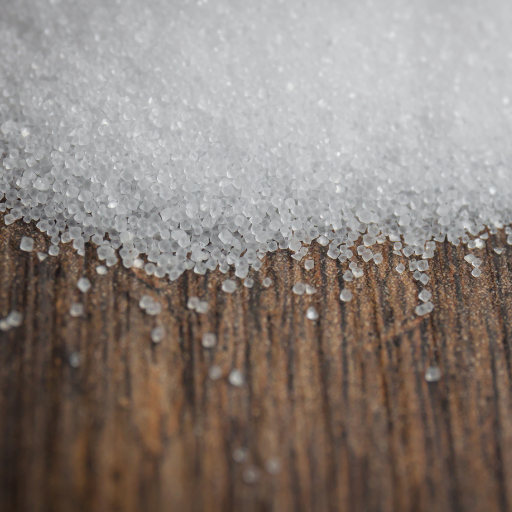
The numerous factors that need to be considered in relation to environmental and soil health when using Epsom salt as a magnesium supplement are complex. First and foremost, an excess of magnesium sulfate may cause soil salinity issues, hence deteriorating the structure and health of the soil. Existing magnesium levels and soil pH must be monitored through soil tests before application. Secondly, continued use of Epsom salt can destroy the balance among microbial population in the soil resulting in loss of beneficial microorganisms vital for nutrient cycling. In order to minimize possible adverse effects such as these, it is recommended that best agricultural practices be instituted such as rotation with other forms of Mg supplementation or use of organic matter. On the other hand, over-applying this fertilizer may result into run-offs which may end up contaminating local water bodies thereby necessitating accurate application rates and timing so as to minimize environmental impacts.
Implications on Soil pH and Structure
Application of Epsom salt containing Magnesium Sulphate can affect both PH and Structure differently within soils. The reality, however, is that how much pH will change after applying Epsom salts depends on some aspects of how acidic or alkaline the initial condition was. Since Magnesium ions from Epsom salt competes with calcium ions in binding to colloidal materials found in clay particles specifically those rich in organic matters thus affecting aggregation leading to alteration of structure (Kabata-Pendias & Pendias 2000). In case calcium ion concentrations were initially high, this displacement could lead to a temporary decrease in soil pH because many researchers have shown that it takes time for magnesium to give slight acidification.
Moreover, magnesium also greatly enhances soil texture, particularly under sandy soils, since it enhances retaining capabilities for both water and nutrients within soils (Sarwar et al., 2018). However, excessive amounts might compact clayey soils, thus reducing porosity and even leading to poor root growth and water penetration.
Sustainability in Gardening
Sustainable gardening techniques are important to maintain soil fertility and the health of ecosystems for a long time. Crop rotation and polyculture, which helps in breaking up pest, weed, and disease cycles while also increasing soil nutrients diversity, is one such practice. Applying natural materials like straw, wood chips or leaves on the ground provides an excellent mulching that can keep moisture in the soil and suppress weed growth resulting into healthy plants. Moreover, composting kitchen waste with garden litter is a good way of increasing organic matter that makes the soil rich with some nutrients and microorganisms without applying artificial fertilizers (Matsuoka 2008). Drip irrigation, as well as rainwater harvesting, save water resources since they tend to encourage economic use, reducing dependence on the town’s supply. Gardeners should adopt an integrated pest management strategy that will minimize the need for chemical pesticides while at the same time promoting beneficial insect activity.
Combining Epsom Salt with Other Nutrients
Properly done combining Epsom salts with other nutrients can have positive effect on plant growth. Magnesium sulphate, commonly known as Epsom salt, is mostly used as it contains both magnesium, vital for photosynthesis, enzyme functioning, and sulfur (Hakeem et al., 2019). Once mixed with agents having calcium content, such as gypsum, it may be useful in countering excess magnesium levels to ensure improved structure of soil, therefore subsequently leading to increased nutrient balance. Adding Epsom salt to nitrogenous fertilizers promotes leafy growth rates whilst supplements which contain potassium stimulates flowering and fruiting stages. The most important thing however remains monitoring of soil conditions regularly by doing regular checks on nutrient levels so that their quantities do not exceed what plants require for normal growth (Bouyoucos 1962). The advised application rates must be maintained and coupled with periodic soil testing for optimum gains.
Frequently Asked Questions (FAQs)
Q: What are the benefits of using Epsom salt for tomato plants?
A: Epsom salt for plants provides magnesium and sulfur, which are essential nutrients that help with seed germination, promote the formation of plant cell walls, and enhance nutrient uptake. Specifically for tomato plants, it can help produce more robust plants and improve fruit quality.
Q: How do I add Epsom salt when planting tomatoes?
A: During initial planting, you can add a couple of tablespoons of Epsom salt directly into the hole where you will place the tomato plant. This ensures that the roots get an immediate supply of magnesium.
Q: Can I use Epsom salt for peppers and tomatoes?
A: Yes, Epsom salt is beneficial for both tomatoes and peppers. Both types of plants have similar nutritional needs and can benefit from the added magnesium to improve overall health and fruit production.
Q: How often should I add Epsom salt to my tomato plants?
A: It is generally recommended to apply Epsom salts to your tomato plants every two weeks. This can be done by either mixing a tablespoon of Epsom salt into a gallon of water and watering your plants with it, or by sprinkling the salt around the base of the plants.
Q: How do I know if my tomato plants need Epsom salt?
A: Tomato plants showing deficiency symptoms like yellowing leaves, poor fruit set, or slow growth might be lacking magnesium. Conducting a soil test can help determine if there is a magnesium deficiency and if Epsom salt is needed.
Q: Is it possible to use too much Epsom salt on tomato plants?
A: Yes, applying too much Epsom salt can lead to excessive magnesium in the soil, which can interfere with calcium uptake and potentially cause issues like blossom end rot. It’s crucial to follow recommended guidelines and avoid over-application.
Q: How does Epsom salt help prevent blossom end rot?
A: Epsom salt does not directly prevent blossom end rot, which is caused by calcium deficiency. However, maintaining balanced magnesium levels can help the plant absorb calcium more effectively, thus indirectly assisting in preventing blossom end rot.
Q: Should Epsom salt be used in both outdoor vegetable gardens and pot-grown tomato plants?
A: Yes, Epsom salt can be beneficial in both scenarios. For pot-grown plants, you should be careful with the amount used due to the limited soil volume. Dilute a teaspoon of Epsom salt in a gallon of water and use this to water the plants.
Q: Can Epsom salt be mixed with other fertilizers?
A: Yes, Epsom salt can be used alongside other fertilizers, but be mindful of the overall nutrient balance in the soil. Too much magnesium can affect the plant’s ability to uptake other nutrients like nitrogen and phosphorus. Conduct soil tests periodically to ensure proper nutrient levels.






